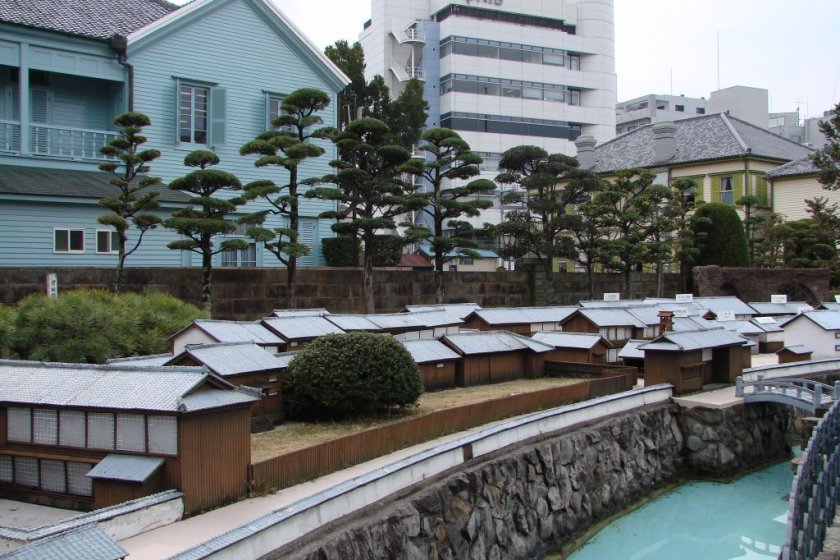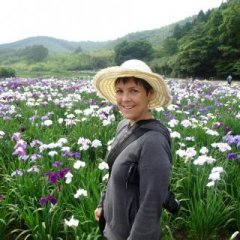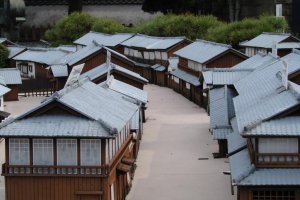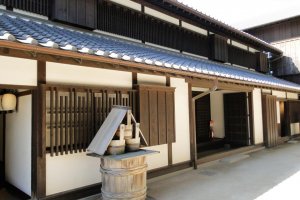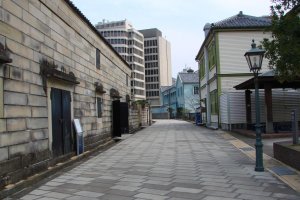For over two centuries of Tokugawa rule, Japan was essentially cut off from the world. Foreign visitors and ideas were banned by the ruling shoguns and Japanese themselves were forbidden to leave the country. The only official contact with the rest of the world occurred at a tiny island in Nagasaki Harbor called Dejima.
The island of Dejima was initially built in the late 1600s to house the rabble-rousing Portuguese missionaries. A small peninsula of land near Nagasaki Harbor was selected as suitable and canals were dug to cut off the peninsula from the mainland. The new fan-shaped island, measuring a mere 190 meters across, did not house the Portuguese long. A European-backed Christian rebellion in Kyushu in the late 1630s led to the expulsion of the Portuguese. The island soon became home to Dutch traders – although they had stayed fairly neutral in the religious conflicts, the shogun by that point had little trust for any foreigners. Dutch merchants from Hirado were forced onto Dejima, where they and their descendants would live for the next two hundred years.
Dejima today bears little resemblance to the isolated island of long ago. Urban development and land reclamation resulted in the sea around Dejima being filled in. Today, trams stop just outside the west gate of the “island”, where small craft launched from the Dutch ships in the harbor would pull up and unload their goods and supplies. If you enter through this portal, the first section of buildings you’ll come upon is the oldest section, crisp white houses with blue and green trim that date from around the 1820s. A thorough restoration in the early part of this century means the quarters shine like new and house excellent bilingual exhibits, from a small history museum to a photo display on the restoration process. You can also poke your head into rooms like the Chief Factor’s quarters – such a tiny bed! – and the Japanese officials’ office. Don’t miss the kitchen, which showcases a scene from a Christmas dinner in the 19th century.
Further down the paved lane, stone buildings from the late Edo Period replace the more colorful wooden structures. A theater runs continuous films (English translation available) on the history and residents of Dejima while the nearby archaeological exhibit has a sizable display of ceramics and other daily items unearthed in the course of the restoration.
The eastern end of the island is dominated by Taisho-era buildings, most notably the former Protestant Seminary (1878) and the Nagasaki International Club (1903). In the corner of the island, a model of Dejima in miniature gives a great overview of this tiny community.
While so much work has been done on Dejima already, the long-term plan is to return the land to its original state. In the upcoming years, a series of canals is scheduled to be dug and Dejima will become an island once more.
